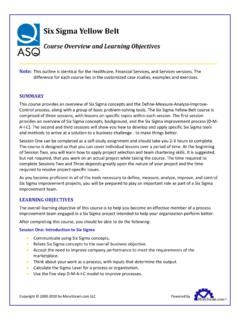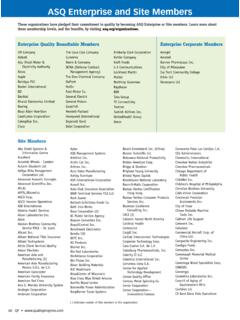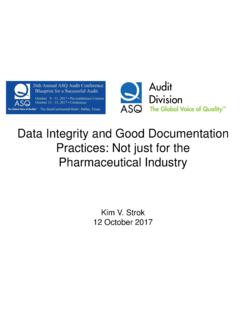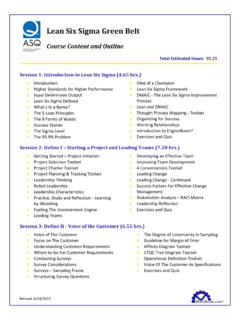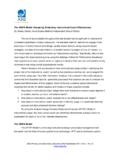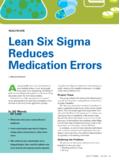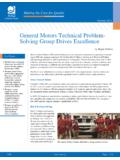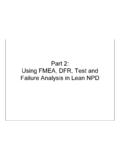Transcription of Handbook for Basic Process Improvement
1 HandbookforBasic ProcessImprovementMay 1996 Handbook for Basic Process ImprovementiTable of ContentsSectionPageIntroduction1 What is the new Handbook for Basic Process Improvement ?1 What is a Process ?1 Who owns processes?2 What is Process Improvement ?2 How does Process Improvement benefit the organization?3 How does an organization get started on Process Improvement ?3 What s in the Basic Process Improvement Model?4 Step 1: Select a Process and establish the Process Improvement objective 7 Step 2: Organize the right team11 Step 3: Flowchart the current process17 Step 4: Simplify the Process and make changes19 Step 5: Develop a data collection plan and collect baseline data21 Step 6: Is the Process stable?
2 23 Step 7: Is the Process capable?25 Step 8: Identify root causes for lack of capability27 Step 9: Plan to implement the Process change28 Step 10: Modify the data collection plan, if necessary30 Step 11: Test the change and collect data31 Step 12: Is the modified Process stable?32 Step 13: Did the Process improve?33 Step 14: Standardize the Process and reduce the frequency of data collection35 List of FormsProcess Selection Worksheet8 team charter Worksheet13 Improvement team Meeting Record16 Handbook for Basic Process ImprovementiiList of IllustrationsIllustrationPageBasic Process Improvement Model5 Step 1 flowchart7 Step 2 flowchart11 Sample Agenda15 Step 3 flowchart17 Step 4 flowchart19 Step 5 flowchart21 Step 6 flowchart23 Step 7 flowchart25 Plan-Do-Check-Act Cycle26 Step 8 flowchart27 Step 9 flowchart28 Step 10
3 Flowchart30 Step 11 flowchart31 Step 12 flowchart32 Step 13 flowchart33 Step 14 flowchart35 Handbook for Basic Process Improvement1 IntroductionWhat is the new Handbook for Basic Process Improvement ?The new Handbook has been developed to assist team leaders at all levels who areinvolved in Process Improvement efforts. Together with the Basic Tools for ProcessImprovement, or tools kit, it provides the practical information you need to initiate andsuccessfully carry out Process Improvement approach and tools described in the Handbook follow a Basic Process ImprovementModel.
4 This model differs in many respects from the Process Improvement Flowchartfound in the CNO-sponsored Starter Kit for Basic Process Improvement distributed tocommanding officers several years ago. The Basic Process Improvement Model is muchmore detailed, in keeping with the how to approach used in the new Handbook . Together, the model and Handbook explain the actual actions teams must take to improvea diving into the step-by-step discussion, let s first clarify some terms, look at thebenefits of Process Improvement , and think about the best way to get is a Process ?
5 A Process is no more than the steps and decisions involved in the way work isaccomplished. Everything we do in our lives involves processes and lots of are some examples:writing a work ordershooting a weapongetting out of bedrepairing a valveordering a partperforming a testconducting an UNREP preparing a messageloading a missileallocating a budgetmooring a shipconducting a drill.. and the list goes you can see, the level of importance of processes processes, such as conducting an UNREP or mooring a ship, are veryimportant.
6 If such a Process performs very poorly if it is not doing what it issupposed to do the command might be unable to complete its processes for example, ordering a part, or developing a budget are lesssignificant in terms of the command s mission. But, while they are less important tothe overall operation of the command, such routine processes are still vital to thesmooth functioning of an office or work for Basic Process Improvement2 Besides differing in importance, processes can be either simple or processes may be comparatively simple.
7 Repairing a valve, for example,may be a relatively simple task involving only a few people and the other hand, some processes, such as conducting a main space fire drill, arevery complicated. Many people are involved and numerous Process steps andcontributing processes are owns processes?Everyone has a stake in one or more processes. Groups of individuals usually sharein and own the activities which make up a Process . But the one individual who isultimately responsible and accountable for the proper working of the Process is known asthe Process owner.
8 The Process owner is the immediate supervisor or leader who hascontrol over the entire Process from beginning to Process owner may choose to be a team leader and participate directly in the actions ofa Process Improvement team . Or, the Process owner may decide to delegate the teamleadership role to another person who is knowledgeable about the Process . Whatever thecase, it is very important for the Process owner to stay informed about the team s actionsand decisions affecting the is Process Improvement ?
9 Process Improvement means making things better, not just fighting fires or managingcrises. It means setting aside the customary practice of blaming people for problems orfailures. It is a way of looking at how we can do our work we take a problem-solving approach or simply try to fix what s broken, we may neverdiscover or understand the root cause of the difficulty. Murphy s Law comes into play andour efforts to fix things may actually make things , when we engage in true Process Improvement , we seek to learn what causesthings to happen in a Process and to use this knowledge to reduce variation, removeactivities that contribute no value to the product or service produced, and improvecustomer satisfaction.
10 A team examines all of the factors affecting the Process : thematerials used in the Process , the methods andmachines used to transform the materialsinto a product or service, and the people who perform the for Basic Process Improvement3 How does Process Improvement benefit the organization?A standardized Process Improvement methodology allows us to look at how we performwork. When all of the major players are involved in Process Improvement , they cancollectively focus on eliminating waste of money, people, materials, time, andopportunities.
